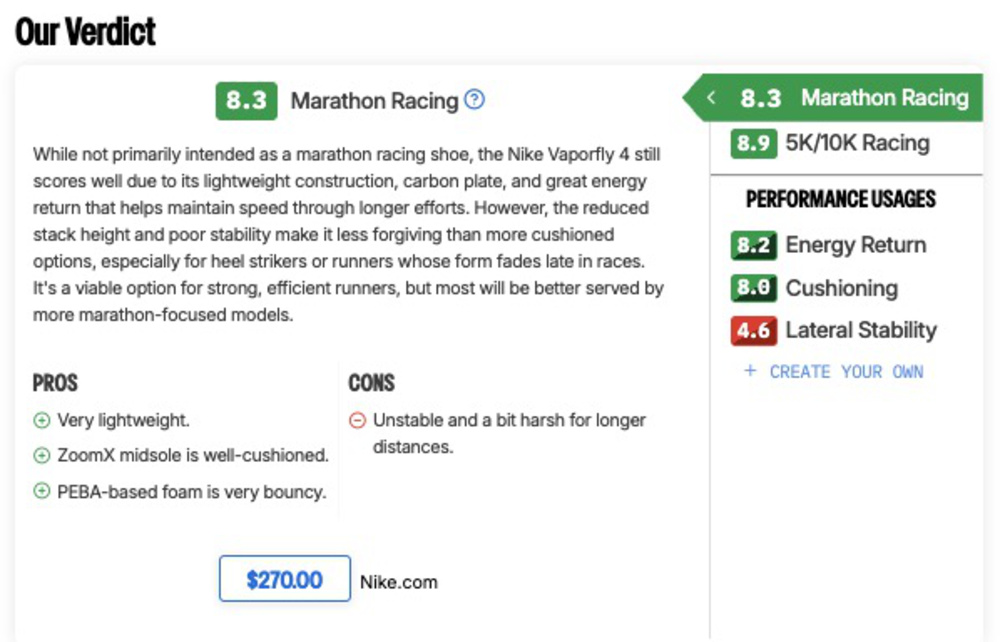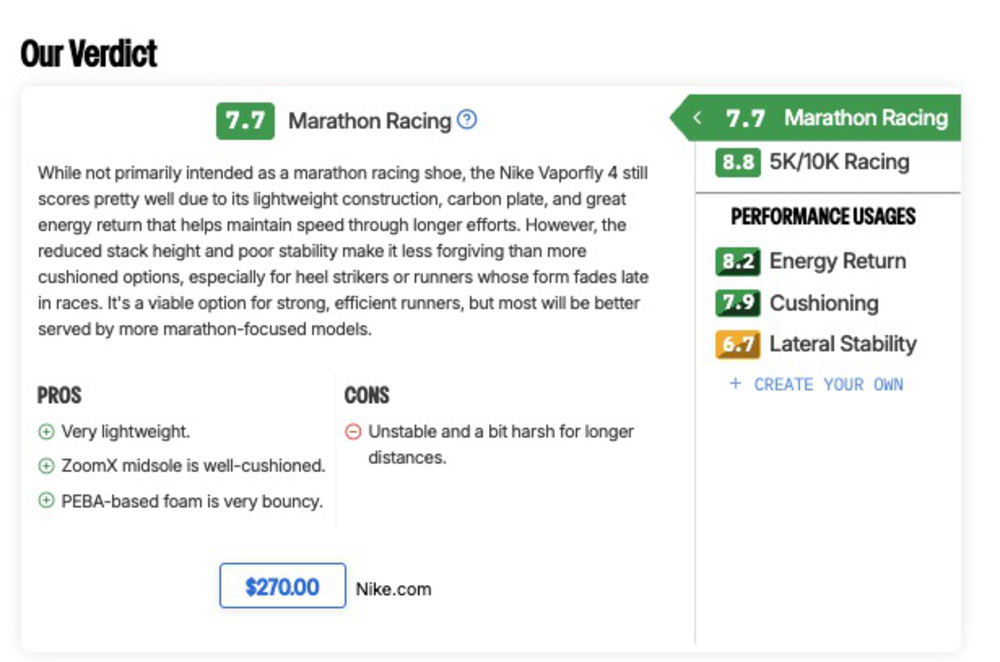Running Shoes Test Bench 0.8.1 introduces a range of changes to both the usages and test methods to improve the accuracy and usefulness of our scoring system.
Our original Test Bench 0.8 introduced performance tests for energy return, stability, and cushioning, along with design-related metrics like weight, shape, and stack height. To learn more about our original testing approach, check out our article from the R&D team.
While the methodology remains solid, expanding our sample size (by testing more models) revealed edge cases where performance results didn't fully align with real-world experience. This prompted some fine-tuning to better reflect user expectations. In particular, we updated the lateral stability and marathon racing usage evaluations by adding new tests and adjusting the underlying test methodology.
What's Changed?
| Test Group | Description |
| Design | External Shape |
|
| Design | Stack Heights |
|
| Design | Internal Shape |
|
| Design | Weight |
|
| Performance | Heel and Forefoot cushioning |
|
These test updates are intended to feed directly into the usage and performance usage boxes. Here's how those changes play out and why they matter.
Verdicts And Usages
The main driver behind this test bench was the expansion of our tested model pool after launch. As we tested more shoes, new scenarios emerged that revealed edge cases where the scores, particularly in the Marathon Racing usage and its lateral stability component, didn't accurately reflect real-world performance or known user feedback. Specifically, some lightweight, carbon-plated shoes with high energy absorption (cushioning) and energy return scored well in the Marathon Racing box, even though they weren't designed for or suited to that usage. A good example is the Nike Streakfly 2: a low-to-the-ground, minimal model built for short, fast efforts (5K to 10K) that lacks the cushioning and protection required for longer distances. Its low stack height boosted its lateral stability score, but its narrow platform (which negatively impacts lateral stability) wasn't taken into account directly in relation to that stack height. This update addresses that by incorporating stack height directly into the Marathon Racing usage and introducing a width-to-stack-height ratio to better account for lateral stability.
| Usages/Performance Usages | Description |
| Marathon Racing |
|
| Lateral Stability |
|

Here's an example of how the changes impact the Nike Vaporfly 4 review. Positioned as a middle-ground option in Nike's racing lineup, it's well-suited for mid-distance efforts (10K to half-marathon), but it's not specifically optimized for the marathon. With the updated methodology, its Marathon Racing score drops slightly, taking into account its lower stack height compared to true long-distance super shoes. At the same time, its Lateral Stability score improves slightly, acknowledging that while the shoe isn't highly stable, it's not particularly unstable either. This is now better captured through the new ratio between platform width and stack height, offering a more accurate picture of its real-world stability.

We applied the same logic across all retested models, so the affected scores have been updated accordingly. Another example is shoes with ultra-high stack heights, like the HOKA Skyward X. Although models like this often feature wide platforms, that width only partially offsets the instability caused by the tall stack of foam, which raises the foot far off the ground and can feel wobbly. By factoring in the ratio between stack height and base width, the updated method slightly lowers the stability score, offering a more realistic reflection of actual performance.
Let Us Know What You Think!
Overall, this update provides a more accurate reflection of real-world running shoe performance and better aligns with user feedback. While our test methodology still doesn't capture every factor experienced runners consider when choosing a running shoe, it's a step in the right direction. If you have suggestions or ideas to help us improve our reviews, feel free to comment on any page or reach out at feedback@rtings.com. Your input has been essential in shaping our tests, and we're grateful for it!
55 Running Shoes Updated
We have retested popular models. The test results for the following models have been converted to the new testing methodology. However, the text might be inconsistent with the new results.
- adidas Adizero Adios Pro 3
- adidas Adizero Adios Pro 4
- adidas Adizero Adios Pro Evo 1
- adidas Adizero Adios Pro Evo 2
- adidas Adizero Boston 12
- adidas Adizero Boston 13
- adidas Adizero Evo SL
- adidas Adizero Prime X 2.0 STRUNG
- adidas Supernova Rise
- Altra Torin 7
- ASICS GEL-KAYANO 31
- ASICS GEL-NIMBUS 26
- ASICS GEL-NIMBUS 27
- ASICS GLIDERIDE MAX
- ASICS METASPEED EDGE PARIS
- ASICS METASPEED SKY PARIS
- ASICS NOVABLAST 4
- ASICS NOVABLAST 5
- ASICS SUPERBLAST 2
- Brooks Glycerin Max
- Brooks Hyperion 2
- Brooks Hyperion Max 2
- Diadora Gara Carbon 2
- HOKA Clifton 10
- HOKA Clifton 9
- HOKA Mach 6
- HOKA Mach X
- HOKA Mach X 2
- HOKA Skyward X
- Mizuno Neo Vista
- Mizuno Neo Vista 2
- Mizuno Neo Zen
- Mizuno Wave Rebellion Pro 3
- New Balance FuelCell Rebel v4
- New Balance FuelCell Rebel v5
- New Balance FuelCell SuperComp Elite v4
- Nike Alphafly 3
- Nike Invincible 3
- Nike Pegasus 41
- Nike Vaporfly 3
- Nike Vaporfly 4
- Nike Vomero 17
- Nike Vomero 18
- Nike Zoom Fly 6
- On Cloudboom Strike
- On Cloudmonster 2
- On Cloudsurfer 2
- PUMA Deviate NITRO 3
- PUMA Deviate NITRO Elite 3
- PUMA Fast-R NITRO Elite 3
- Saucony Endorphin Elite 2
- Saucony Endorphin Pro 4
- Saucony Endorphin Speed 4
- Saucony Endorphin Speed 5
- Saucony Triumph 22